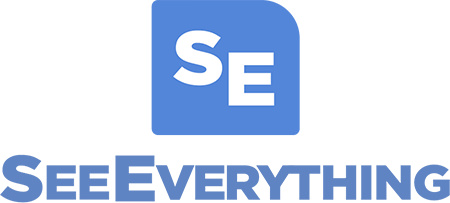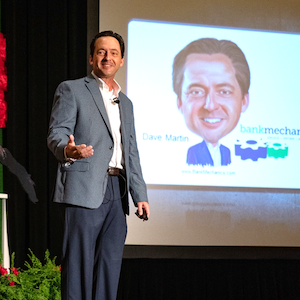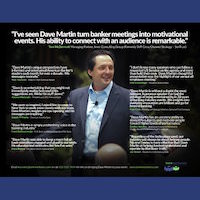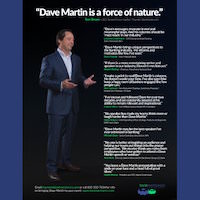 |
 |
Your talent is God's gift to you. What you do with it is your gift back to God. » Leo Buscaglia
Duck Blinds and Deer Stands
Two of the bank mergers announced in the past 12 months will have branches, in my hometown, changing names in the near future.
Prior to the announcements, I wasn’t actually aware that each bank had a branch near me.
I had to Google it.
Well, what do you know? Each bank has a branch on a busy street that I drive on a couple times a week.
Funnier still was that when I went out of my way to look for those branches on a recent drive, I discovered another bank’s branch about 100 yards away that I also never realized was there.
This busy stretch of road and the intersection just before it are heavily landscaped and tree lined.
The hedges along that street create great camouflage.
That’s great for a deer stand or duck blind… but it’s not exactly helpful to a business.
Sure, I’m aware that city ordinances restrict what the facades of buildings in that area look like.
The powers that be apparently want things neat and tidy and completely indistinguishable.
Still, the restaurants and coffee shops on that stretch seem to make themselves more visible.
Yes, they have the same restrictions. However, they seem to always have just a little outside activity, or temporary signage, or some other “signs of life”.
I was reminded of the conversations I’ve had with bankers over the years about the fact that they often overestimate the “billboard effect” of some of their branches.
I suggest that the amount of traffic you can observe from the front door of a branch is irrelevant if that traffic doesn’t or can’t observe you.
Some argue that in today’s world, online maps are all that matter. People find branches using searches.
A friend joked, “Heck, some people won’t believe a branch they are standing in front of is actually there unless a Google map tells them it is.”
I asked, “If that’s the case, why don’t you divest of expensive ‘high visibility’ branches and relocate to cheaper properties off the beaten path?”
He laughed, “Well, let’s not go crazy here.”
The fact remains that location does matter.
In an increasingly online world, physical access still matters. Brand awareness matters even more so.
Many banks continue to pay for “high visibility” access... but drop the ball on generating awareness.
What signs of life can you generate and display to make drivers, pedestrians, and/or shoppers aware of your own branch this week?
Terminal Turbulence
A story about the New Orleans airport came across one of my newsfeeds this week that had me shaking my head and smiling.
Granted, it was somewhat funny to me only because I wasn’t there.
I’ve had more than my fair share of terrible airport experiences all around this great land of ours, so I empathized with the travelers in the article.
I felt a little less sympathetic towards the airport planners and the folks managing the place.
The story by Nicholas Reimann for Nola.com came a few days after another story I read about how beautiful and “world class” the new facility is.
The folks who had been given a preview raved about everything from the new restaurants and bars, to the new shops, to the shiny new technology everywhere.
And then… it opened.
Apparently, the folks who designed the queuing lines didn’t properly plan for how long those lines would become. Chaos broke out as several competing lines formed.
The various airport workers on duty were unprepared (possibly untrained?) for that contingency.
Several travelers reported missing their flights while stuck in lines as problems cascaded.
Multiple new shops were not open or unmanned and tensions grew.
At the time the column was written, many of the problems had continued for days.
I always liked the old airport. Sure, it wasn’t much to look at and the food options were pretty sparse for a New Orleans venue.
Well, and the restrooms weren’t anything to write home about. (But why would you write home about a restroom?)
However, it was a breeze to navigate. It worked.
Now, I’m sure…okay, I’m hopeful… that they’ll get things figured out soon and that new world class looking airport may eventually run like one.
Reading this saga reinforced something I often preach about.
Impressive facilities, modern design, new technology, and smart strategies are fantastic.
In the end, however, successful operations come down to the moving parts; i.e. the people.
Competent, engaged people make things work for customers when things go according to plans and, quite often, even when they don’t.
Some are highly visible and front and center, and some fix problems and address issues behind the scenes.
Effective leaders never forget that the quality of their operations is only as high as the quality of their people.
Make sure your own quality people know you appreciate that fact.









